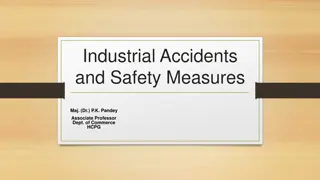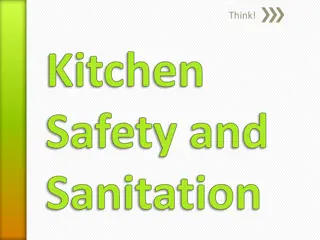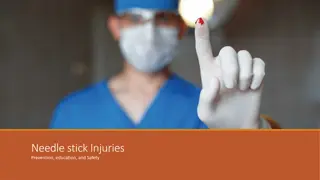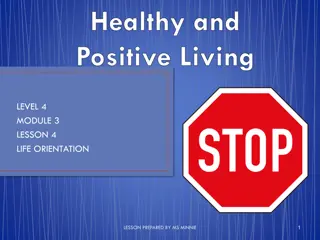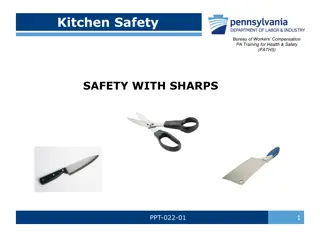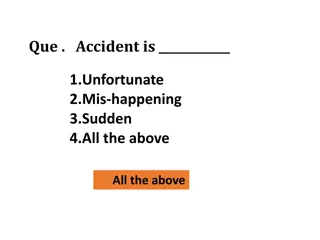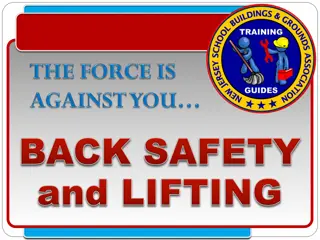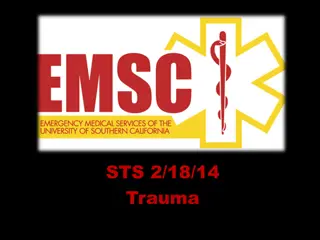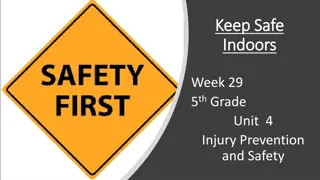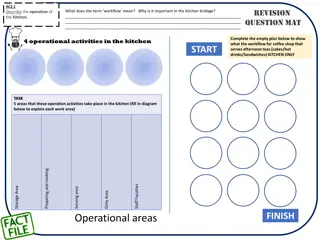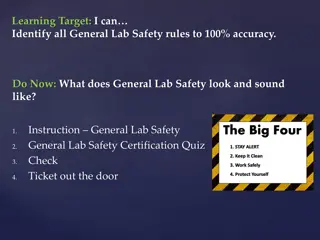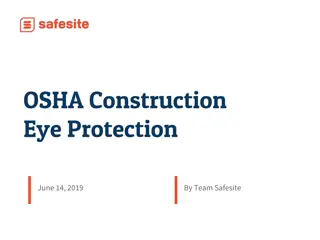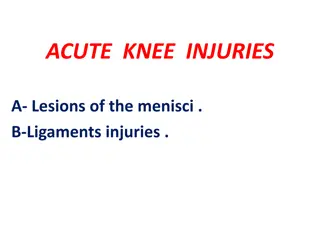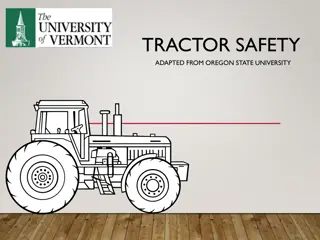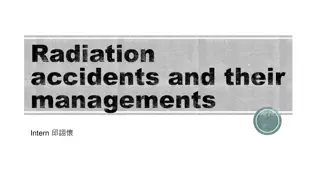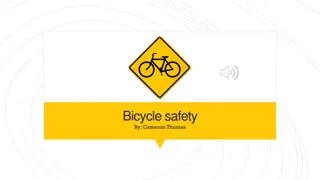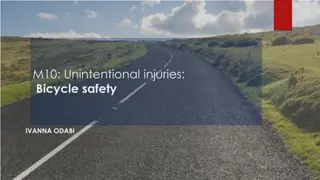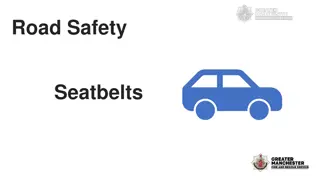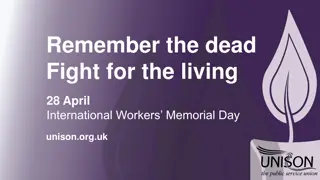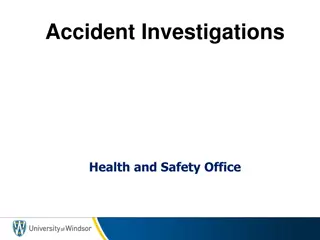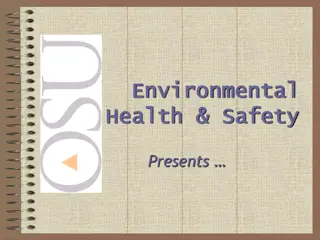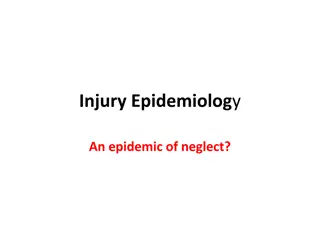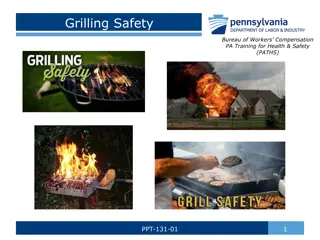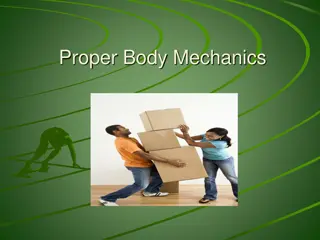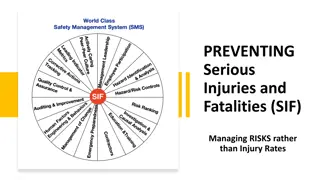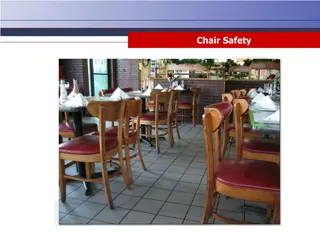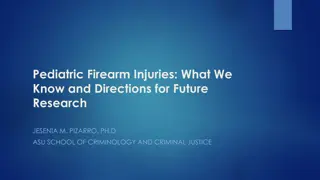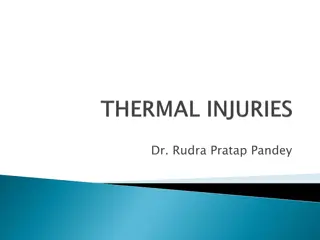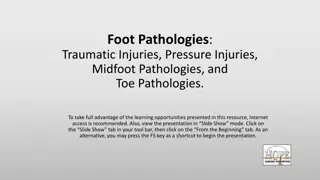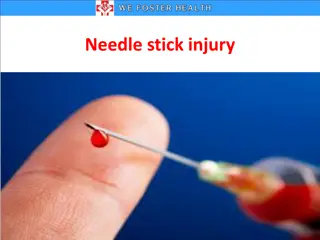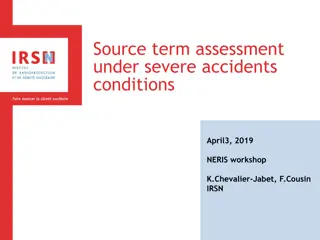Kitchen Safety Tips to Prevent Accidents and Injuries
Kitchen safety is crucial to prevent accidents like cuts, burns, chemical poisonings, and fires. Keep cabinets closed, store hazardous items out of reach of children, and handle sharp objects carefully. Learn how to treat common kitchen injuries and use fire extinguishers effectively.
Download Presentation

Please find below an Image/Link to download the presentation.
The content on the website is provided AS IS for your information and personal use only. It may not be sold, licensed, or shared on other websites without obtaining consent from the author. Download presentation by click this link. If you encounter any issues during the download, it is possible that the publisher has removed the file from their server.
E N D
Presentation Transcript
CHAPTER 6: SAFETY IN THE KITCHEN
SAFETY IN THE KITCHEN Keeping all kitchen cabinets and drawers closed will prevent accidental injuries Tripping, Injuries, etc. Kitchen accidents are due to ignorance, result from carelessness Most Common Accidents Chemical Poisonings Cuts Burns Fires Falls Prevent many accidents by properly using and caring for equipment
PREVENTING CHEMICAL POISONING Children are especially susceptible to chemical poisoning Many household items look like food to children Furniture Polish Cleaners Bleach Keep all hazardous products safely stored in a high place Do not rely on containers with safety closures, some kids can open them Treating Poisonings Call the nearest poison control center immediately Accurately describe the poison taken
PREVENTING CUTS Knives, sharp appliances, and broken glass cause most cuts Keep knives sharp, dull blades can slip = cut Move blade away from you when you are cutting Never point a sharp object at anyone Do not try and catch a falling knife, let it fall to the floor, then pick it up Wash and store knives separately from other utensils Never pick up broken glass with bare hands use gloves Pick up large pieces carefully then wipe up fragments with a damp paper towel
PREVENTING CUTS CONT. Dispose of glass IMMEDIATELY Treating Cuts Cover the wound with a sterile cloth Apply firm pressure to wound to stop bleeding
PREVENTING BURNS & FIRES Scalding liquids, spattering grease, and hot cooking utensils cause most kitchen burns Use pot holders to handle hot utensils Turn all pan handles inward Open lids away from you so steam escapes Lighting gas ranges manually, light match first then turn off gas Never leave a pan of grease unattended Keep fire extinguisher handy and know how to use it
TREATING BURNS When burned place burned area under cold running water Do not apply ointment or grease of any kind
PREVENTING FALLS Most falls result from unsteady step stools and wet or cluttered floors Use a sturdy step stool or ladder Wait until a freshly washed floor dries before walking across the room Wipe up spills IMMEDIATELY Do not let children leave their toys on the kitchen floor Remove shoes, boots, sports equipment, and other objects from kitchen traffic area
TREATING FALLS If you suspect a broken bone, DO NOT MOVE THE VICTIM unless absolutely necessary
PREVENTING ELECTRICAL SHOCK Faulty wiring, overloaded electrical outlets, damaged appliances are common causes of electrical shock Do not touch any electrical plugs, switches, or appliances when your hands are wet Do not overload electrical outlets by plugging several appliances into the same outlet When disconnecting appliances, hold onto the plug, not the cord Replace all worn plugs and cords Do not use damaged appliances
TREATING ELECTRICAL SHOCK If someone receives an electric shock, immediately disconnect the appliance or turn off the power causing the shock DO NOT TOUCH THE VICTIM if he/she is connected to the power source Call for help, begin rescue breathing
PREVENTING CHOKING Choking occurs when an object such as a piece of food becomes stuck in the throat The trapped object blocks the airway, making it impossible to speak or breathe Choking victims can die in 4 minutes if the airway is not cleared Do not give children small, round pieces of food, such as hot dogs or carrots Cut slices into halves or quarters
TREATING CHOKING Chest Thrusts/Abdominal Thrusts a procedure used to save choking victims, exerting pressure on the victim s abdomen Someone who can COUGH, BREATHE, or TALK is NOT choking Abdominal thrusts can injure a person so see a doctor as soon as possible



